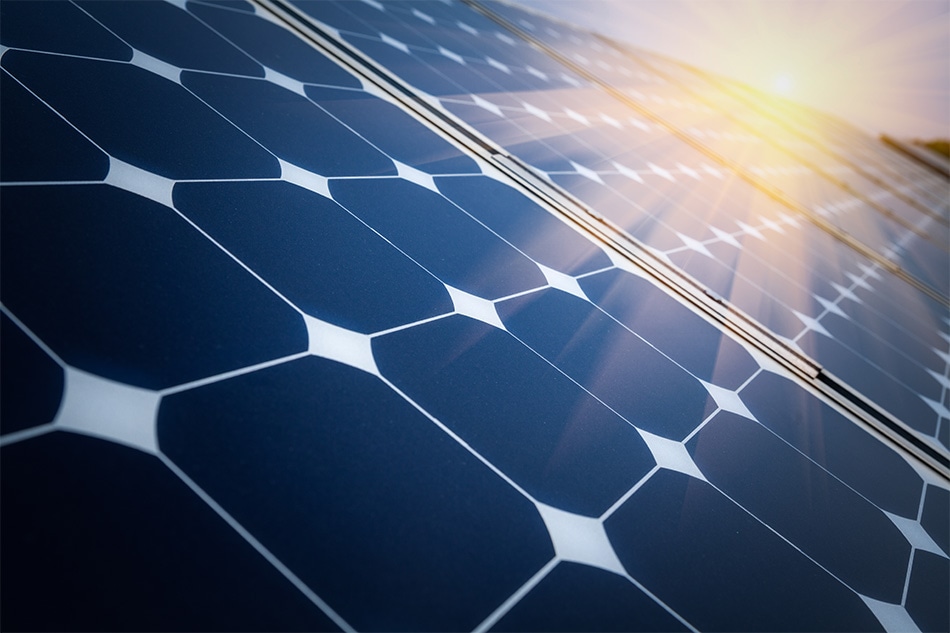 Image Credit: Shutterstock.com/wangsong
Image Credit: Shutterstock.com/wangsong
A new material which acts as a catalyst to accelerate the splitting of water molecules could help answer the energy storage issues of the future.
The demand for energy is ever increasing, with wind and solar energy favourites to help satisfy this need. However, wind and solar energy are not always available, so efficient and reliable storage is necessary before they can significantly contribute to meeting our energy demands.
An important approach to storage is in the form of hydrogen extracted from water using wind or solar energy. The process utilises an electrolyser, which uses electricity generated by solar or wind energy to split water into hydrogen and oxygen.
Hydrogen is used as an energy carrier – it can be stored in tanks and later converted back into electrical energy with the help of fuel cells. The process can be carried out locally where energy is needed – domestic residences or fuel cell vehicles for example – enabling mobility without CO2 emissions.
Researchers at the Paul Scherrer Institute (PSI) in Switzerland have developed a new material that acts as a catalyst within the electrolyser, potentially making such devices cheaper and more efficient in the future.
“There are currently two types of electrolysers on the market: one is efficient but expensive because its catalysts contain noble metals such as iridium. The others are cheaper but less efficient”, explains Emiliana Fabbri, researcher at PSI. “We wanted to develop an efficient but less expensive catalyst that worked without using noble metals.”
The team explored this idea using a material which had already been developed – an intricate compound of barium, strontium, cobalt iron and oxygen, a so-called perovskite. They are the first to develop a technique enabling its production in the form of miniscule nanoparticles. As a nanoparticle, the catalyst will function more efficiently since there is a larger surface area upon which the reactive centres are able to hasten the electrochemical reaction: once each individual catalyst particle has been made as small as possible, their respective surfaces combine to create a much larger overall surface area.
Researchers used a flame-spray device – operated by the Empa – to produce a nanopowder. The device sends the material’s constituent parts through a flame where they merge and solidify quickly into small particles once they leave the flame.
“We had to find a way of operating the device that reliably guaranteed the solidifying of the atoms of the various elements in the right structure,” stresses Fabbri. “We were also able to vary the oxygen content where necessary, enabling the production of different material variants.”
The processes were shown to work not only in the laboratory, but in practice – the production method produces large quantities of the catalyst powder that can be made readily available for industrial use.
“We were eager to test the catalyst in field conditions. Of course, we have test facilities at PSI capable of examining the material but its value ultimately depends upon its suitability for industrial electrolysis cells that are used in commercial electrolysers,” says Fabbri.
The catalyst was tested in cooperation with an electrolysis manufacturer in America, and the researchers were able to show that the device work more reliably with their perovskite catalyst than with the conventional iridium-oxide catalyst.
The researchers were also able to observe what happens in the new material when it is active using X-rays at PSI’s Swiss Light Source. The SLS provided a unique measuring station capable of analysing the condition of the material over successive timespans of just 200 milliseconds.
“This enables us to monitor changes in the catalyst during the catalytic reaction: we can observe changes in the electronic properties or the arrangement of atoms,” says Fabbri. “At other facilities, each individual measurement takes about 15 minutes, providing only an averaged image at best.”
The measurements also revealed how the structures of particle surfaces change when active – parts of the material became amorphous, which unexpectedly makes the material a better catalyst.
The work on this new catalyst – which provides an important base for the development of a new generation of water electrolysers – has been published in Nature Materials.
Disclaimer: The views expressed here are those of the author expressed in their private capacity and do not necessarily represent the views of AZoM.com Limited T/A AZoNetwork the owner and operator of this website. This disclaimer forms part of the Terms and conditions of use of this website.